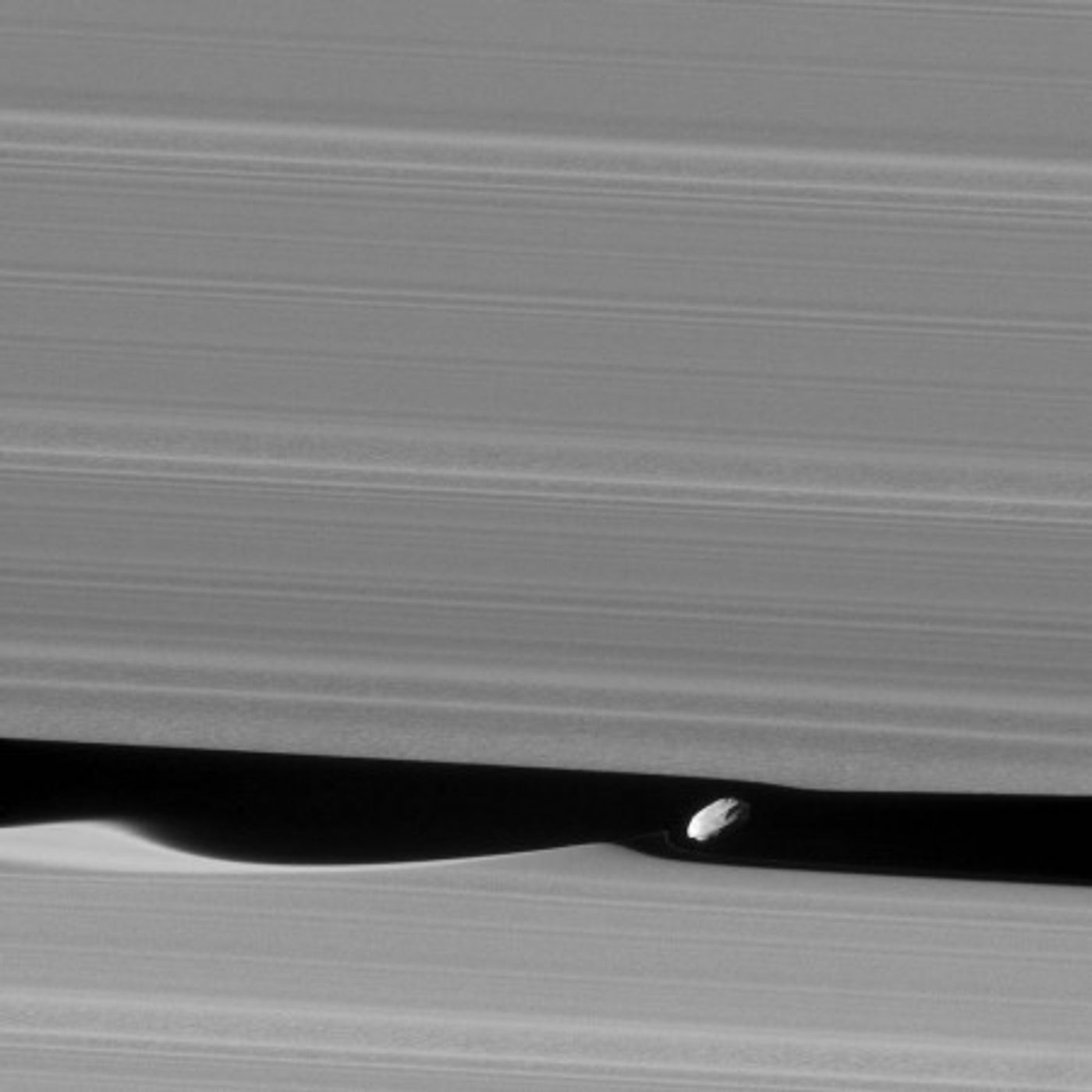Cassini Grabs Pictures of 'Waves' in Saturn's Rings, Created by a Moon
NASA’s Cassini spacecraft was launched in 1997 and has been observing the Saturnine system for almost 13 years. It took a while to officially get there, but the wait was certainly worth it, as Cassini has been sending back amazingly detailed images of Saturn and its moons, showing us what goes on there.
Among the latest images NASA has shared on its blog are images from Cassini’s narrow-angle camera that show Daphnis, one of Saturn’s moons, creating ripples and waves along one of its rings.
Image Credit: NASA / JPL-Caltech / Space Science Institute
These are a result of the motion of Daphnis, which has somewhat of a vertical influence to it. In fact, NASA says that the saves are a result of Daphnis moving in and out of ring planes, as the gravitational effects of the moon influence the rings.
The images were taken in October of 2016 while Cassini was approximately 810,000 miles away and were captured in visible light. Just to give you an idea of the size of Daphnis, it has a diameter of about 5 miles. Additionally, the image was brightened by a factor of two to make Daphnis more visible.
NASA often studies the wave-like motions of Saturn’s rings, as these can often indicate the presence of undiscovered moons. On the other hand, this particular instance appears to be a moon that we already knew of.
For what it’s worth, Saturn has literally dozens of moons. There are 150 moons and moonlets, while 62 of those are confirmed. Of those 62, only 53 have been given official names to celebrate their discovery. Some of the moonlets, on the other hand, are nothing more than coagulated fragments of the rings themselves.
There is clearly a lot of un-tapped mystery to the Saturnine system, but the Cassini mission is scheduled to end in September of this year, which is when the probe itself will dive into Saturn's atmosphere, grabbing information about the atmosphere along the way and transmitting it to Earth in its final breath of life.









